- Administrator
- Albums and Singles
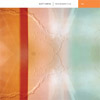
As a companion piece to Line's reissue of Lovesliescrushing's CRWTH (Chorus Redux) from earlier this year, guitarist/instrumentalist Scott Cortez has also released a work of guitar ambience from the latter portion of the '90s that is simultaneously reminiscent of the era's sonic fringes, yet sounds just as fresh today as it would have then.
Due to its composition (all processed guitar) and era of initial recording, I can't help but compare Cortez's guitar experimentations with that of Robert Hampson's Main project, who was active at this time as well.Even though the work of both artists would fit comfortably in the isolationist scene from the period, both construct their guitar work into very different frameworks.While Hampson's always sounded as if he was creating microscopic colonies of organisms via layers of digital processing, Cortez's sound feels more atmospheric in the literal sense.The deconstructed tones and hums of guitar are stretched into stratospheric layers of sound, sometimes icy, other times warm and engaging.
Twin Radiant Flux is a single piece broken into three segments, which are indexed into a total of nine tracks.It opens with near silence, with only the most subtle swells of sound that carry an odd, unnatural warmth.It builds in complexity, but then splits apart into even more sparse territory before the sound gets heavier, with dense sounds welling up that actually resemble an electric guitar at times, but only in the loosest of senses.With the heavier sounds comes a more dramatic ambience, bringing a cinematic sense to close the section out.
The second movement begins with ominous sustained notes, occasionally resembling bowed guitar strings but either way bringing a dark, glacial mood along.As the section continues into its second half, it retains the heavy sound briefly, but then retreats, leaving a thinner, but still dramatic motif that brings along rhythmic swells of guitar that trumpet along for most of the duration.
The final portion again opens by retaining the almost recognizable guitar sounds, beginning forcefully and then withdrawing to quiet, pensive textures.The final two sections bring the guitar back, but in the form of shimmering rays of sonic light, pulling out of the cold bleakness of before and into gentle and beautiful skies.By the end the overt guitar is still there, but eventually becomes organ like textures before closing with the same minimal tones that opened the album.
Given Cortez's reliance on Luddite methods:other than guitar most of the output here is from looping pedals and four track cassette recordings, the wide array of sound and emotion conveyed on Twin Radiant Flux is even more impressive.There are a multitude of other artists working in similar fields who don’t come close to the powerful work here with an array of DSP software packages and digital multitracking setups.While the sound is somewhat sparser without the use of LLC vocalist Melissa Arpin-Duimstra’s voice as an instrument, there is a purity here that gives the album its own distinct feel.
samples:
 
Read More
- Administrator
- Albums and Singles

Originally released in 2004, the limited quantity and distribution of the original Heart Ache EP surely resulted in a bulk of its listeners relying on less than honest means of hearing it. Now available widely with recently finished EP that began around the same time, it is a wonderful opportunity to hear how things have changed with Jesu, as well as stayed the same, in the past six years.
While the first disc in this set, the two track Heart Ache, is the first actual Jesu release, I always felt the project was born in the literal closing moments of the final Godflesh LP Hymns.The hidden track that ended that album was one of the few instances of gentle guitar and melodic, unprocessed vocals by Justin Broadrick, who often relied on a malignant growl or a battery of effects to obscure his voice.Soon after that, Godflesh dissolved and after a brief respite, Jesu was born.The elements of Jesu began appearing long before the demise of Godflesh, however.From the melodic vocals of "Slateman" to the lush string synths of "Cold World" into the deconstructed guitar samples of "Flowers" remix, the pieces of Jesu were always there.
Ironically enough, the opening moments of "Heart Ache" could very well be a Godflesh song.With its detuned, open guitar squall and stiff Alesis drum machine rhythms (which hadn't been heard consistently since 1994's Selfless), the first six minutes sound very much like one of the extended Godflesh improvisations of times past.However, once the riffs die away and are replaced by sampled choruses and slightly digitalized, but otherwise pure guitar tones, the true sound of Jesu comes about.Broadrick's vocals are mostly sung without the multitude of effects he previously relied on.While the track lacks the depth and diversity of latter day Jesu long-form pieces such as "Sun Down" or Infinity, there's enough for it to stay captivating.
"Ruined" opens, in my opinion, as strongly as "Heart Ache" ended, with a sparse piano line that slowly drifts into dark, reverberating tones before going into a grinding guitar/drum machine duet that once again isn’t far removed from what Broadrick was doing with Godflesh, but again with more naked and overt vocals.However, when it becomes a repeated pastiche of a barked "Right!/Wrong!," it goes too far into the realm of metal for my liking.The dour closing synth strings and guitar melodies that lead the closing third of the song make up for the unnecessary aggression, in my opinion.
The second disc, Dethroned, is an unfinished EP from around the same time as Heart Ache, that was just recently completed.Given Broadrick's recent refocusing of Jesu as a guitar oriented project, the tracks sound both vintage and new.The title track again emphasizes the guitar lead sound that Jesu began with, and then returned to in earnest on last year's Opiate Sun.The hallmark of the "newer" Jesu is present on Broadrick's mulitracked vocal harmonies, though here presented with a disorienting series of disparate delays.
The chugging, muted riffs and stiff beat of "Annul" give a vintage feel, but again, Broadrick is singing more than he ever did on prior albums or projects.What is surprising is its rather conventional structure, especially next to the two sprawling tracks from Heart Ache.The beautiful "Aureated Skin," with its slow, funeral pace, haunting synths and reverberated vocal melodies feel like much more than just a nod to The Cure's Faith-era influence on the project, but far more successful than the unfortunate cover of "The Funeral Party" Jesu contributed to the Perfect As Cats compilation.
The closing "I Can Only Disappoint You" is perhaps the most naked sounding song I’ve ever heard Broadrick do, with its sparse rhythm, simple guitar and untreated vocals, a far cry from the dense shoegaze of Silver or Conqueror.With the odd presence of tape hiss that seems to bleed in at times, it feels like a bedroom demo that wasn’t meant for public consumption, exacerbated its intimate sound.As usual, the Japanese label Daymare has added an additional track, this time an extended dub mix of "I Can Only Disappoint You" that adds little to the original and strips away some of the intimacy of the original.Unlike some of the extras the label has added, this one isn’t that essential.
Considering the development of the Pale Sketcher as an outlet for Broadrick’s electronic oriented work and an impending Godflesh resurrection with the return of G.C. Green, I wonder where exactly Jesu will fit into the grand scheme of things.Considering Justin Broadrick has explicitly said he uses Jesu as his pop music project, I hope it doesn't get lost in the shuffle of new side projects and old bands returning.It has its own distinct sound that continues to be polished via split releases and solo EPs, and I hope this gentler, softer side isn't forgotten.
samples:
 
Read More
- Administrator
- Albums and Singles
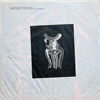 This 1986 album was the beginning of Zoviet France’s Charm, Ceremony, Chance, Prophecy tetralogy and continued the collective's shift away from harsher textures and lo-fi production towards a cleaner and more restrained aesthetic.  Misfits occupies something of a lull in the Zoviet France discography, as it is not nearly as strong as earlier releases like Eostre, Gris, or Norsch nor does it give much hint of how much potential such a change in direction actually held.  Despite that, it still boasts a few excellent pieces, one of which ranks among the band’s finest work.
This 1986 album was the beginning of Zoviet France’s Charm, Ceremony, Chance, Prophecy tetralogy and continued the collective's shift away from harsher textures and lo-fi production towards a cleaner and more restrained aesthetic.  Misfits occupies something of a lull in the Zoviet France discography, as it is not nearly as strong as earlier releases like Eostre, Gris, or Norsch nor does it give much hint of how much potential such a change in direction actually held.  Despite that, it still boasts a few excellent pieces, one of which ranks among the band’s finest work.
Red Rhino/Charrm
Sadly, I was not cool enough at age 11 to have picked this up when it came out, but if I had, I would have been a bit confused as to what Zoviet France was going for. Given the benefit of hindsight, it is a logical stage in their evolution, but when compared to only its predecessors, it seems a bit like ZF lost the plot a bit. Misfits, Looney Tunes, and Squalid Criminals is a comparatively tame and minimal affair and there is quite a bit of filler included for just a nine-song album.  Most of these pieces suffer from a lack of intensity, density, or progression, all of which were ineffectually replaced by an unwavering faith in the powers of clarity, space, and adding lots of echo to percussion loops.  History has proven that their instincts were ultimately mostly right, but at this stage of the game, the collective had not quite gotten all pieces quite in place for a successful "ambient" album.
A couple of the longer pieces sound pretty dated and unrewarding today, like "Host-Blowing the Instrument,""Flote," and "Rattle Stick Cruss," as they have very little substance beyond very simple ethno-percussion loops being reversed or heavily echoed.  In fact, they kind of sound like Jamaican dub with all of the song-like aspects removed: no real melody, no strong beat, just plenty of reverb- and echo-heavy clattering and maybe an occasional didgeridoo or ghostly melodica.  Also, the few slightly harsher "old style" pieces, like "Signal 2" and "Signal 3" sabotage their effective use of garbled vocals and ominous tension by being extremely short.  It feels like the band was being pulled in two separate, opposing directions and didn't realize that there was quite a bit of more welcoming musical terrain available between them. However, things get quite a bit better by the end of the album.
The brief but hypnotically pulsing "Gesture, Signal, Threat" is the album's first clear moment of success, though it perhaps errs in being a bit too aggressive with reversed tape loops.  "Semasen," however, tackles roughly the same territory, but works dramatically better, adding a cool, blurred-sounding bass line and a warm, drugged haze.  Equally importantly, it is given some time to stretch out and achieve a healthy degree of cumulative power.  It almost seems like Zoviet France had an epiphany near the end of the recording session in which they realized that striving for minimalism and nuance doesn't necessarily mean that songs have to be limited to just one or two ideas.  Whether such a realization actually occurred is anybody's guess, but the album's closing piece pulls all the threads together in way that makes sense and towers above everything that preceded it.
The provocatively titled "They're Eating the Passengers" is a minor masterpiece of sinister tension, weaving echo-warped tapes of plane hijackers with an insistent pulsing and brooding smears from an Eastern-sounding string instrument.  There's still a heavy reliance on studio effects and repetition, but in this instance they are used in service of a very strong musical idea rather than as ends unto themselves.  Also, it helps that the sarod or tanpura (or whatever the hell it is) is used melodically as well as texturally.  I'm actually a bit mystified as to why such an excellent piece wound up being released at the end of a lackluster album rather than being used as the cornerstone of a newer, better album, but I imagine they had their reasons.
Anyone attempting to compile a retrospective of Zoviet France's work would be a bit crazy not to include "Passengers" and possibly "Semasen," but Misfits, Looney Tunes, and Squalid Criminals’ appeal effectively ends there (unless you can find a fully intact copy of the record, since the album art is pretty neat too). Fortunately, this stage turned out to be just an awkward transition rather than the beginning of Zoviet France's demise, as some of their greatest work was still to come.
Samples:
 
 
 
Read More
- Administrator
- Albums and Singles
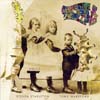 This year is a good year for Nurse With Wound-related reissues and this re-release of the collaboration between Steven Stapleton and Tony Wakeford is a good way to finish off 2009. Comprising of the original album on one disc and numerous unused mixes from the original sessions and new remixes from Wakeford and others; this is a good lesson in how to do justice to a classic album. This is a great reissue which has brought back an old favorite from the depths of the deleted release bin.
This year is a good year for Nurse With Wound-related reissues and this re-release of the collaboration between Steven Stapleton and Tony Wakeford is a good way to finish off 2009. Comprising of the original album on one disc and numerous unused mixes from the original sessions and new remixes from Wakeford and others; this is a good lesson in how to do justice to a classic album. This is a great reissue which has brought back an old favorite from the depths of the deleted release bin.
Although, Stapleton is essentially Nurse With Wound, the fact that this was released under his own name is revealing. Revenge of the Selfish Shellfish sounds like something else altogether and it is not just the large presence of Wakeford as it is also removed from his solo work and the Nurse With Wound releases that he also features on. The music swerves between Stapleton’s crooked surrealism and Wakeford’s more song orientated approach but never settles on either of the duo’s respective styles. The liner notes state that neither artist was compos mentis either due to drink or drugs for the recording session so it seems that in their inebriated and uninhibited state that they forged some new middle ground between them.
Much of the album goes along similar lines, sinister collections of sonic oddities and ancient musical forms combining in strange but lovely forms. “Falling From Heaven” ushers in the album with a supernatural allure, soft metallic drones captivating the listening instantly. “Walk the White Ghost” and “Lucifer Before Sunrise” form a mesmerising centrepiece to the album; the intoning of apocalyptic lyrics over doom-laden beats, funeral marches through the landscape of a Zdzisław Beksiński painting. However, by far and away the jewel in Revenge of the Selfish Shellfish’s crown is the sprawling audio mulch that is “The Frightened City,” where harsh electronic loops give way to noise, field recordings and easy listening jazz (and providing an early view of what modern Nurse With Wound would sound like). However, Wakeford’s melodic awareness relieves the piece of some of its unhinged chaos but this accentuates the weirdness rather than reduces it.
In addition to the original album, this reissue also includes a comprehensive bonus disc of goodies including unused mixes from the original sessions and brand new mixes by a bunch of like-minded artists. The unused mixes appear to have only been dropped for reasons of album flow as they are just as good as what made it out on the original album, particularly “Mussel” which is a grizzly cousin to “The Frightened City.” Also included are two new mixes by Wakeford, neither of which stray from the original album much. I am not sure what I was expecting but it has been over 15 years since this album came out and I would have thought he might have something new to bring to the old material. Perhaps fresh ears were all that were needed as the other remixes work quite well, giving a new spin on familiar material.
It is great to see this album back in print, especially with all these extras. A huge amount of love has been put into restoring Revenge of the Selfish Shellfish and it shows (right down to the beautiful double gatefold sleeve which is far superior to the crummy jewel case of the original). This album has stood the test of time admirably and is as potent today as ever.
samples:
- Walk the White Ghost
- The Frightened City
- Oyster Sauce Remix (Brian Conniffe)
Read More
- Administrator
- Albums and Singles
 One of the best international compilations that I heard this year was Tumbélé, which examined the impact of African music on the Caribbean. Africa Boogalo is its logical counterpoint, providing ample evidence that the vigorous cultural exchange of the mid-twentieth century yielded equally stunning results on the other side of the ocean (though not without a certain degree of weirdness).
One of the best international compilations that I heard this year was Tumbélé, which examined the impact of African music on the Caribbean. Africa Boogalo is its logical counterpoint, providing ample evidence that the vigorous cultural exchange of the mid-twentieth century yielded equally stunning results on the other side of the ocean (though not without a certain degree of weirdness).
Honest Jon’s
The immediately striking thing about this thirteen-song compilation is how wholeheartedly some of these bands embraced Latin sounds. As the liner notes by Gary Stewart (Rumba on the River) point out, when Latin music hit Africa, it hit big: many musicians Latinized their names or started writing lyrics in Spanish (and some who didn’t know Spanish resorted to Spanish-sounding gibberish). I’m not sure how much of that is present here, as my knowledge of African and Latin languages is uniformly abysmal, but there are several songs that sound undilutedly Latin. The most surprising example is probably Orchestre Poly-Rythmo’s breezy “Il N’est Jamais Trop Tard,” which betrays absolutely none of that band’s primary characteristics (such as traditional Beninese percussion). If the lyrics were not in French, it would be pretty easy to mistake it for an authentic Latin concoction. It’s not a bad song, but it is a bit mystifying, given both their percussion prowess and their reputation as innovators.
Fortunately, not all of the artists included here are as shamelessly and slavishly imitative. In fact, fellow Beninese luminary Gnossas Pedro contributes an absolutely killer track (“Adigbedoto”) that melds sultry, sinuous Latin rhythms with clean, intertwining guitar lines that are distinctly African. Gambia’s Amara Toure is responsible for another of the album’s many highlights ("N'Niyo"), combining a languorous, sexy groove with a smoky saxophone, impassioned vocals, and an elegantly melancholy web of guitars. In general, nearly every song on African Boogaloo features relatively distinct and unmolested Latin rhythms, saving innovations and individual touches for the guitars and the horns (the smoldering sax on Laba Sosseh’s “Guantanamo” is particularly inspired) . One of the only bands that depart from this template are the legendary Orchestre Baobab, who adroitly Latinize a Senegalese mbalax rhythm.
Not all of the efforts here are entirely successful, as the title track is pretty painful (it sounds like a black French Big Bopper covering “Low-Rider” with somewhat ridiculous flute accompaniment). I’m not quite sure why it was included, as it was recorded by a group of expatriates living in Paris, but it does feature one of the titans of African jazz (Manu Dibango). Maybe the compilers just liked the title (not sure why though, as the word “boogaloo” always makes me cringe). That’s pretty much the only questionable inclusion though. Admittedly, however, I was also caught a little off-guard by Charles Lembe’s “Quiero Wapacha”, which seemed to crib a bit from the Venture’s “Walk Don’t Run.”
Africa has certainly been anthologized to death recently, but this is one of the best attempts I’ve heard thus far. There is certainly some brazen cultural appropriation occurring here, but the songs are almost invariably excellent (especially those by Orchestre OK Jazz, who fill nearly a quarter of the album). Latin-Afro fusions can get pretty frenetic, cluttered, and over-the-top at times, but Africa Boogaloo’s two compilers (Mark Wimmers and Mark Ainley) have wisely kept the focus on simmering, laid-back grooves, making for an album that holds up extremely well with repeated listens. They also have an ear for great guitar playing, and Africa had some of the best guitarists around in the ‘60s and ‘70s. This will probably not be leaving my stereo for quite some time.
Samples:
- Gnossas Pedro – Adigbedoto
- Rio Band – Vamos A Bailor
- Amara Toure – N’Niyo
Read More
- Administrator
- Albums and Singles
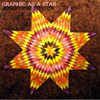 Psych-folk chanteuse Josephine Foster has always been a reliably unusual and singular artist, but her dissonant, artier tendencies have sometimes detracted from the beauty of her lilting, world-weary voice. With this release, a song-cycle based upon the poetry of Emily Dickinson, that experimental impulse is confined entirely to structure and concept. The result is one of her most ambitious, listenable, and mesmerizing albums, as Foster's gorgeously baroque vocals are finally allowed to swoop and quaver around comparatively simple and traditional melodies.
Psych-folk chanteuse Josephine Foster has always been a reliably unusual and singular artist, but her dissonant, artier tendencies have sometimes detracted from the beauty of her lilting, world-weary voice. With this release, a song-cycle based upon the poetry of Emily Dickinson, that experimental impulse is confined entirely to structure and concept. The result is one of her most ambitious, listenable, and mesmerizing albums, as Foster's gorgeously baroque vocals are finally allowed to swoop and quaver around comparatively simple and traditional melodies.
Graphic as a Star was conceived last winter while Foster was living in an isolated village in the mountains of Spain. She didn't bring many books with her, but one of the few that made the trip was a volume of Dickinson’s poetry, which understandably resonated deeply with Josephine, given her geographic and social isolation (Emily didn’t get out too much either). Inspiration struck and this song-cycle cohered in matter of mere weeks. Although Dickinson's poetry has been interpreted by some classical composers in the past, Foster sought to present it in a manner much more harmonious with the quiet intimacy of the source material. She was quite successful, as the naked elegance of these pieces perfectly suits the lonely lyricism of Emily's words. In general, the poems make an entirely seamless transition into song, but their varying lengths (and lack of a repeating chorus) do not particularly lend themselves to a traditional pop format: the 26 pieces collected here range in length from 30 seconds to five minutes. Consequently, nothing ever overstays its welcome, but sometimes the best moments are a bit too ephemeral.
It doesn’t seem like Foster brought many instruments with her to Spain either, as most of the songs feature only a lazily strummed acoustic guitar. Occasionally, a brief interlude of Dylan-esque harmonica playing will add a splash of color, but there are also quite a few songs that contain no instrumentation at all (unless chirping birds count). Given the fragile sadness of the material, that sparseness was a thematically appropriate artistic decision. However, it makes the songs pretty difficult to differentiate until they’ve been heard enough for the lyrics to sink in. There’s not much point in differentiating them though, as Graphic as a Star works most effectively as an album-sized dose. That said, there are a still few tracks that could work as singles, most notably the gently wistful “My Life Had Stood-A Loaded Gun” or the breezily swinging “I Could Bring You Jewels-Had I a Mind To.”
There are absolutely no freakfolk or psychedelic moments on Graphic as a Star at all, but it is a strange and anachronistic album anyway. There is certainly some superficial similarity to '60s folkies like Joni Mitchell, Joan Baez, or Shirley Collins, but Foster’s vocals are much more idiosyncratic. In fact, Josephine often sounds like a slumming classical vocalist, but one that has internalized a great deal of sultriness and looseness from early jazz and torch songs. Also, the songs themselves have a very timeless and traditional feel, like they could be hundreds of years old. Naturally, that feel is most evident on the a cappella pieces like the eyebrow-raisingly titled “Wild Nights-Wild Nights!” and “What Shall I do-It Whimpers So,” but even Foster’s guitar playing is simple enough to avoid alluding to any specific era. On a related note, it has been a long time since I have read any Dickinson, so I had forgotten about her sometimes-comic overuse of exclamation points (another charming example is “Heart! We Will Forget Him!”). Emily’s occasional melodrama, thankfully, is lost in the transition to song. In fact, there is almost nothing to find fault with at all. This is a warm, beguiling, and unexpectedly accessible album. I’m not sure if it is Foster’s best or not, but I think it will age extremely well.
Samples:
Read More
- Administrator
- Albums and Singles
 This split 12” was one of the best musical surprises I’ve had this year, turning up unexpected as it did in my mailbox at the radio station where I do a weekly program. Usually people don’t send vinyl to me at the station (though it is encouraged) just CDRs of mostly forgettable music, hence my happiness in receiving a release that some serious effort went into. When I finally got around to listening to the record I was immediately impressed: the epic drone of Scott Cortez’s side shows him reaching out into the gorgeous expanses of space with masterfully layered guitar manipulation, while Language of Light presents a more animated and alchemical journey.
This split 12” was one of the best musical surprises I’ve had this year, turning up unexpected as it did in my mailbox at the radio station where I do a weekly program. Usually people don’t send vinyl to me at the station (though it is encouraged) just CDRs of mostly forgettable music, hence my happiness in receiving a release that some serious effort went into. When I finally got around to listening to the record I was immediately impressed: the epic drone of Scott Cortez’s side shows him reaching out into the gorgeous expanses of space with masterfully layered guitar manipulation, while Language of Light presents a more animated and alchemical journey.
With “White Tiger Phantoms” Scott Cortez (of Lovesliescrushing) has created a blissful dreamscape that begs to be listened to repeatedly. It’s the kind of music that I love to listen to when I need to unwind, the kind of song that unknots kinks in the neck and allows the mind to drift awhile, seemingly freed from the confines of physical space. Harmonic arcs and hums emerge gradually as more quivering lines are added to the simple hovering note, alternately descending and rising back up, that makes the songs opening. As the work progresses, like a slow sheet of ice expanding across a lake, vibrant overtones crystallize on the surface creating a feeling of idle suspension. The air in the room takes on a vibrant shine as the gossamer threads of Scott’s delicate guitar issue out of the speakers. It is representative of a type of minimalism that (deceptively) contains more than the sum of its parts. This is easily the best bit of drone work I’ve heard all year, and brings to mind the lush ambience heard on Aloof Proof’s 1994 masterpiece album “Piano Text.”
“Double Helixes Up To Heaven” on the Language of Light side is just as brilliant. It mines a different area while still being part of the same claim. Sweeping synthesizers placidly slip and glide around a gently picked guitar, spiraling like the DNA hinted at in the songs title. The combination of synth and guitar guide each other easily through the three demarcations the song is sectioned into: Prima Materia, Distillation and Sublimation, and Escape from the Retort. The first part begins with a slowly played melody as hints of distorted guitar fall in and out of focus. I can see why this part is called the Prima Materia or First Matter, because it has a very stellar quality, perfect music for stargazing or contemplating the origins of the universe. The middle continues in the same vein, but the stress is on the synthesizer’s blustering icy syncopations and dissonant rhythms. The last part provides the perfect denouement. The lilted guitar picking is again matched by a second slightly distorted guitar whose fragrant incensed breath is like warm fire. The piece ends with a flute-like loop receding into infinity. It is clearly a good thing that Rebecca Loftiss (of The Gray Field Recordings) and Frank Suchomel (Inalonelyplace) have started collaborating together.
The music on this split is wonderfully beautiful and I hope it sees a broader release than the initial run of 300 limited copies. That being said the personnel at Anticlock Records have done very well in bringing out this stunning release.
samples:
- White Tiger Phantoms
- Double Helixes Up To Heaven (Prima Materia)
- Double Helixes Up To Heaven (Escape from the Retort)
Read More
 This split 12” was one of the best musical surprises I’ve had this year, turning up unexpected as it did in my mailbox at the radio station where I do a weekly program. Usually people don’t send vinyl to me at the station (though it is encouraged) just CDRs of mostly forgettable music, hence my happiness in receiving a release that some serious effort went into. When I finally got around to listening to the record I was immediately impressed: the epic drone of Scott Cortez’s side shows him reaching out into the gorgeous expanses of space with masterfully layered guitar manipulation, while Language of Light presents a more animated and alchemical journey.
This split 12” was one of the best musical surprises I’ve had this year, turning up unexpected as it did in my mailbox at the radio station where I do a weekly program. Usually people don’t send vinyl to me at the station (though it is encouraged) just CDRs of mostly forgettable music, hence my happiness in receiving a release that some serious effort went into. When I finally got around to listening to the record I was immediately impressed: the epic drone of Scott Cortez’s side shows him reaching out into the gorgeous expanses of space with masterfully layered guitar manipulation, while Language of Light presents a more animated and alchemical journey.
- Administrator
- Albums and Singles
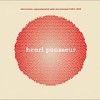 The fifth installment of Sub Rosa's series dedicated to the works of Henri Pousseur highlights the composer's efforts to experiment with different serialist techniques and tonal systems. The compositions presented on this disc span decades and feature a variety of musicians, including a rare performance from Pousseur himself.
The fifth installment of Sub Rosa's series dedicated to the works of Henri Pousseur highlights the composer's efforts to experiment with different serialist techniques and tonal systems. The compositions presented on this disc span decades and feature a variety of musicians, including a rare performance from Pousseur himself.
Admittedly, this can be a dry listen at times. Pousseur's experiments here reflect play with tonal systems that may be of more value to listeners with interest in academic music theory rather than those hoping for a more immediate visceral impact. Anyone hoping to hear electronic pieces resembling his blistering work "Scambi" may be disappointed to find that the only electronics found on this disc are live manipulations of a piece commissioned and performed by oboist Evert van Tright called "Ex Dei in Machinam Memora." Delayed and superimposed over Tright's oboe playing, the result is an enjoyable if sluggishly paced chamber piece.
No doubt, some of these pieces would be better appreciated in a live setting. "Prospection," Pousseur's "first and only rigorous serialist work" as he describes it in the liner notes, is a composition written for three pianos tuned one-sixth-tone apart. Heard blindly, the interaction between the performers is difficult to decipher without visual cues, and the piece loses a bit of its import in the process. A little more engaging is "Racine Dix-Neuvieme de Huit-Quarts" for solo cello in which Pousseur divides octaves into 19 parts, halfway between the 12-tone system and the 31-tone system Christian Huyghens developed in the 17th century. His 19-tone system creates atypical intervals and sounds unusual, if not exotic, and wholly unpredictable.
Pousseur's piece "At Moonlight, Dowland's Shadow Passes Along Ginkaku-Ji" was composed for a Japanese trio and performed at the Europalia festival in Brussels in 1989. Written for shamisen, koto, and shakuhachi, its 12-tone system in a Japanese mode was the composer's attempt to bring the two cultures together in a piece of music. Its glissandi and tremoli bring the piece to life marvelously and set it apart from the other tracks on this disc. Also unusual is the piece Pousseur performed himself, "Figures Enlacées," on an ancient organ that had recently been restored. Tuned to mesotonic temperament, the organ features three rows of major thirds laid out in just fifths. This piece contains both a purposeful harshness and an elegant purity, easily the disc's most dynamic track.
These works reflect Pousseur's restlessly inquisitive nature, one that challenges preconceptions about the construction and utilization of tonal systems and temperament. While important to the composer's development of both his own techniques and musical language itself, these compositions, for the most part, are more satisfying to the intellect than the ears.
samples:
Read More
- Administrator
- Albums and Singles
 Hot on the heels of Cosmarama, this time Nick Saloman ventures across the Atlantic to focus on '60s garage rock from the United States. Saloman leaves no stone unturned in bringing these tracks to CD for the first time, making for another remarkably entertaining compilation.
Hot on the heels of Cosmarama, this time Nick Saloman ventures across the Atlantic to focus on '60s garage rock from the United States. Saloman leaves no stone unturned in bringing these tracks to CD for the first time, making for another remarkably entertaining compilation.
The blues are a big influence on the music of this time, a connection made explicit by the inclusion of several blues covers. While Group Axis obviously don't have Howling Wolf or Hubert Sumlin in their band, it's amusing to listen to them try to make up for it with swagger and ferocious keyboard and guitar solos on their version of "Smokestack Lightning." Bobby Comstock's cocky version of Bo Diddley's "I'm a Man" is also pretty good, though no match for the original. Bobby Simms & the Simmers seemingly adapt Big Mama Thornton's "They Call Me Big Mama" on their cut "Big Mama," changing the focus of the opening lines from the singer to the singer's girlfriend, but the similarity ends there as the lyrics go in a different direction altogether.
Most of these songs are fixated on themes typical to early rock and roll, especially romantic problems. The Bay Ridge's "Without You," The Outcasts' "You Do Me Wrong," The Outsiders' "Haunted by Your Love," and Jack Eden's "It's Only a Dream" all lament the loss of a woman, while unrequited love is common to Bobby Saint Clair's "Fool That I Am" and Dee Jay & the Runaways' "He's Not Your Friend." Other acts are more concerned with asserting themselves, like the aforementioned Bobby Comstock, Kevin Coughlin's title track, and the zany "Get It On/Wilde Childe Freakout" by Dick "Wilde Childe" Kemp, a DJ in Cleveland who cashed in on his popularity with this one-off single.
That Saloman can continue to mine the '60s and find so many obscure tracks of high quality is testament not only to his curatorial abilities but also to that decade's ability to produce great music. For fans of vintage rock, I Gotta Be Me proves that there's still plenty of fantastic music from that era remaining to be heard.
samples:
- Group Axis - Smokestack Lightning
- Jack Eden - It's Only a Dream
- Dick "Wilde Childe" Kemp - Get It On/Wilde Childe Freakout
Read More
- Matthew Amundsen
- Albums and Singles
Although the sound of the Master Musicians has varied little throughout the years, this album presents their music like few have before. Clean and unadulterated by studio effects, the instruments are equally balanced in the mix and possess a fantastic tonal depth that makes their music more appealing-and mesmeric-than ever. The drums on "Joal Fibladijoal" are pummeling and insistent though brief, while the Musicians reach for ecstatic communion on "Boujeloud Dancing with Kandisha." A melodic flute with backing drones encompasses the first half of "Double Medahey" before various drums and rhythms make the hypnosis complete. If the album has a centerpiece, it would be the 19-minute epic "Allah Allah Habibi Galouja," one of the few songs here to feature singing as well as bowed and plucked instruments alongside the usual flutes and drums.
Such a splendid performance coupled with superb recording quality makes this an exceptional album. A fitting tribute to Bowles, Live Volume 1 is also the debut release on a new label owned and operated by the Master Musicians themselves, hopefully the first of many more to come.
Read More


